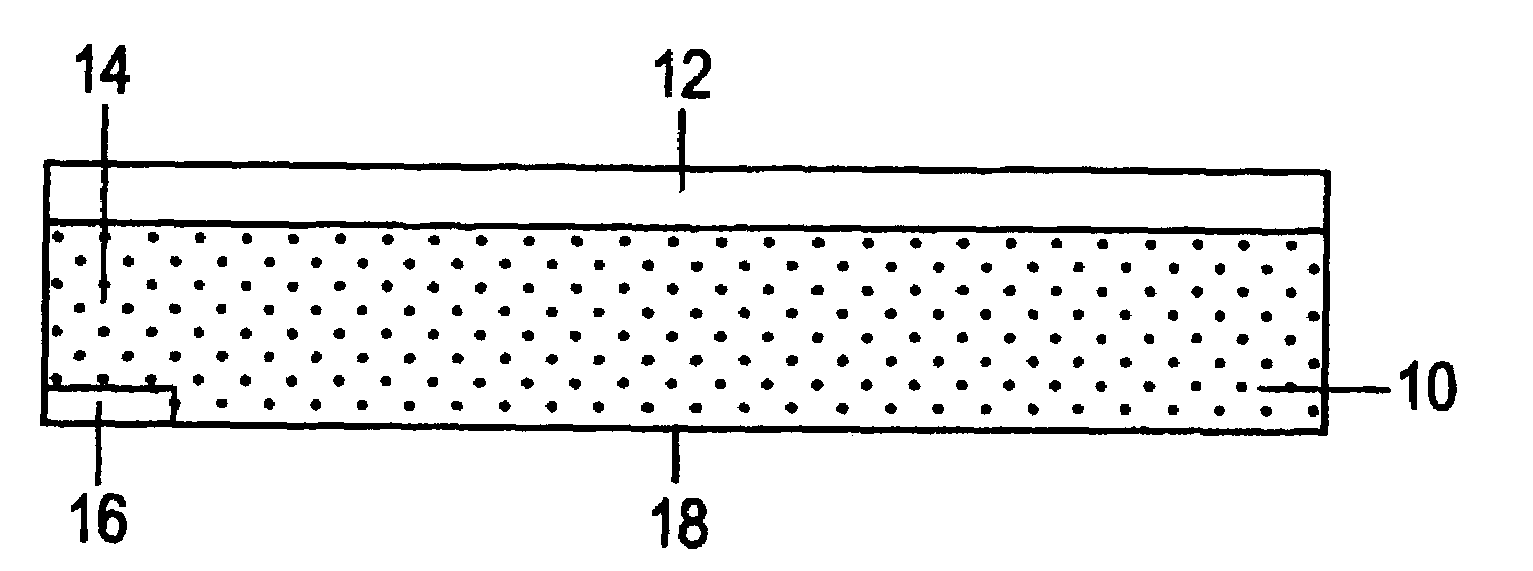Laminated structure and method of forming same
a technology of laminate structure and forming method, which is applied in the field of laminate structure, can solve the problems of undesirable curling edges, and achieve the effect of reducing curling and alleviating curling
- Summary
- Abstract
- Description
- Claims
- Application Information
AI Technical Summary
Benefits of technology
Problems solved by technology
Method used
Image
Examples
Embodiment Construction
[0028]Referring to FIG. 1, there is shown part of a sub-structure of a solid oxide fuel cell comprising an anode layer 10 and an electrolyte layer 12, including one edge portion 14 of the sub-structure. The overall sub-structure has a rectangular configuration with dimensions of about 110×90 mm, and the anode layer 10 has a thickness in the range of about 0.5 to 1.0 mm, for example 0.9 mm, while the solid oxide electrolyte layer 12 has a thickness in the range of 10 to 50 microns, for example about 20 microns. These dimensions are given by way of illustration only, and other arrangements are possible. For example, as described the anode layer 10 will be the support structure in the fuel cell, but in other embodiments a thicker electrolyte layer may be used as the support layer for a thinner anode layer.
[0029]The solid oxide electrolyte layer 12 comprises Y2O3-doped ZrO2 (YSZ) which has been sintered into a dense layer to provide a barrier to fuel gas on the side of the anode layer 1...
PUM
| Property | Measurement | Unit |
|---|---|---|
| shrinkage rate | aaaaa | aaaaa |
| shrinkage rate | aaaaa | aaaaa |
| porosity | aaaaa | aaaaa |
Abstract
Description
Claims
Application Information
 Login to View More
Login to View More - R&D
- Intellectual Property
- Life Sciences
- Materials
- Tech Scout
- Unparalleled Data Quality
- Higher Quality Content
- 60% Fewer Hallucinations
Browse by: Latest US Patents, China's latest patents, Technical Efficacy Thesaurus, Application Domain, Technology Topic, Popular Technical Reports.
© 2025 PatSnap. All rights reserved.Legal|Privacy policy|Modern Slavery Act Transparency Statement|Sitemap|About US| Contact US: help@patsnap.com


